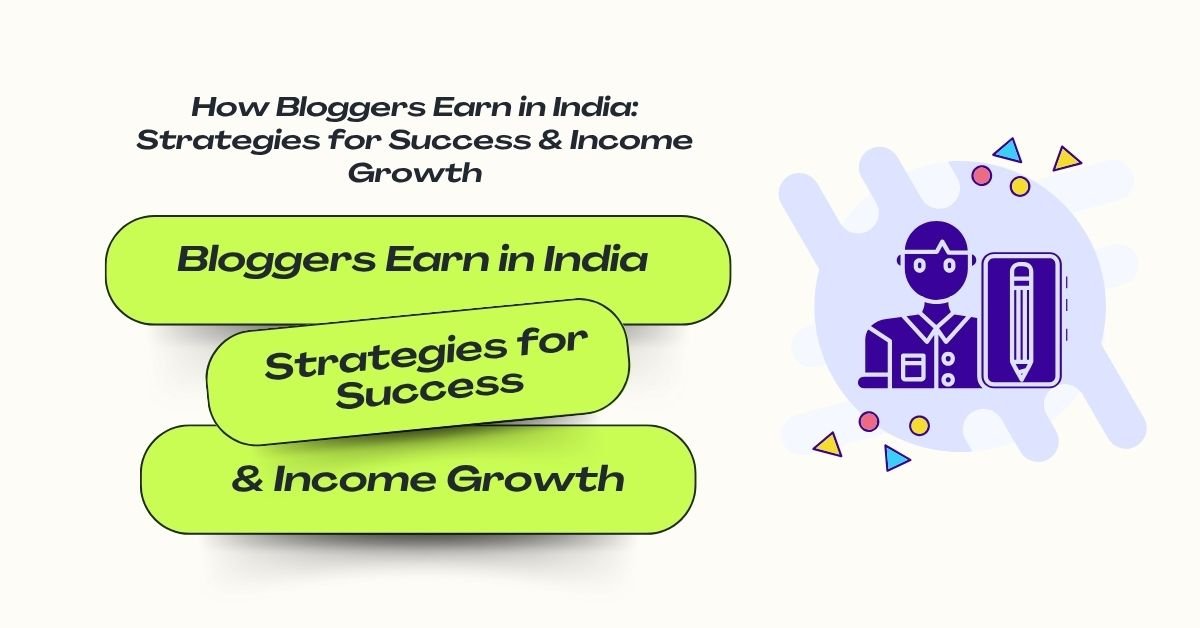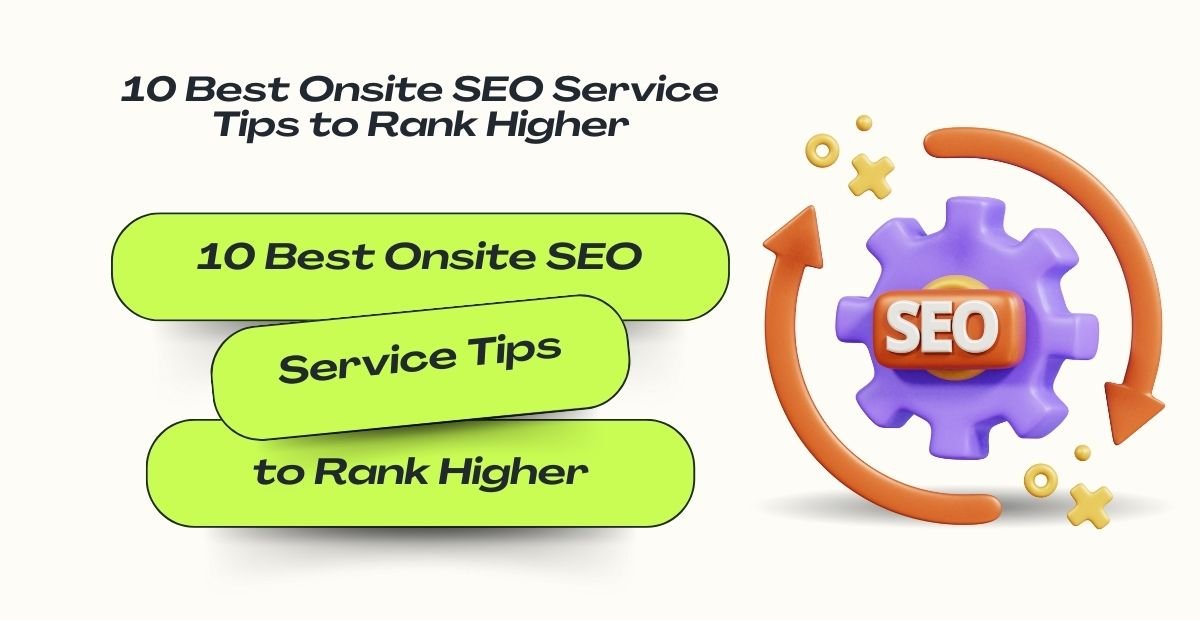
How Bloggers Earn in India: Strategies for Success & Income Growth
Last updated on August 29th, 2025 at 08:11 am
Full-time bloggers wear many hats: writer, strategist, marketer. They craft content for readers, optimize for search engines, manage social media, and cultivate email lists. Consistency and content quality fuel both traffic and trust. In India, where broadband access has skyrocketed in recent years, blogging has shifted from a side hustle to a viable career path for skilled communicators.
Factors Influencing Blogger Earn in India
Geography plays a role; metro-based bloggers often secure higher ad rates and easier networking access. Niche selection matters, too. Finance, tech, lifestyle, and travel yield different revenue potentials. Content quality, audience loyalty, and frequency of publishing all impact income. Those who invest time in SEO, analytics, and strategic partnerships tend to outperform casual creators.
Income Sources for Bloggers
- Display ads like Google AdSense or Mediavine generate passive revenue based on views and clicks.
- Affiliate marketing—bloggers earn commissions by recommending products or services; high-converting niches like fintech or health perform best.
- Sponsored posts and brand collaborations offer direct compensation for product reviews or promotional content.
- Digital products, such as eBooks, online courses, or templates, enable writers to sell expertise.
- Consulting and services—including workshops or coaching provide another income layer tied to blog authority.
Average Earnings of Bloggers in India
Earnings vary widely. Hobby bloggers may earn ₹5,000–₹15,000 monthly from ads and small affiliate commissions. Mid-tier creators in lucrative niches often see ₹50,000–₹2 lakh per month combining ads, sponsorships, and affiliate revenue. Top-tier bloggers, those who diversify income through product sales and premium services, regularly exceed ₹5 lakh per month or more, especially in finance and business sectors.
List Of highest-earning bloggers in India
Top-performing Indian bloggers illustrate different paths:
1. Amit Agarwal – Labnol.org
Often called the pioneer of blogging in India, Amit Agarwal runs Labnol.org, a blog focused on technology, productivity, and software tutorials. He provides guidance on digital hacking, coding, and Google tools. Amit is highly respected because his blog was among the first to show Indians that blogging could be a career. His estimated monthly earnings range between ₹20–25 lakhs, driven by AdSense, affiliate marketing, and online courses.
2. Harsh Agrawal – ShoutMeLoud
A prominent member in the blogging sphere is Harsh Agrawal. His website, ShoutMeLoud, specialises on digital marketing guidance, SEO techniques, and blogging advice He has built a community that helps new bloggers get started. Harsh earns approximately ₹30–35 lakhs per month, mainly from affiliate programs, blogging tools promotions, and brand sponsorships.
3. Shraddha Sharma – YourStory
Shraddha Sharma is the founder of YourStory, one of India’s biggest platforms for entrepreneurs and startups. What began as a small blog is now a media powerhouse. The website features interviews, startup stories, and business insights. Shraddha’s platform reportedly generates more than ₹15–20 lakhs per month, making her one of the most influential voices in digital media.
4. Arun Prabhudesai – Trak. in
Trak was established by Arun Prabhudesai as a blog focussing on Indian telecom, business, and advances in technology. Over time, it became one of the go-to sources for tech updates. Arun’s earnings from blogging and related ventures are estimated to be ₹8–10 lakhs per month, with revenue streams including AdSense, sponsorships, and consulting.
5. Faisal Farooqui – MouthShut.com
MouthShut.com is a client review and ratings site established with Faisal Farooqui. The blog offers insights into consumer products and services, giving users a space to share honest reviews. His platform has been monetized through ads, premium listings, and partnerships. Monthly income is estimated at ₹10–12 lakhs, making him a pioneer in review-based blogging.
6. Varun Krishnan – FoneArena
Varun Krishnan runs FoneArena, one of India’s leading blogs for smartphones, gadgets, and technology reviews. Tech enthusiasts across the country rely on his content before making purchase decisions. With detailed product reviews and brand tie-ups, Varun earns around ₹6–8 lakhs per month, mainly through affiliate sales and AdSense revenue.
7. Malini Agarwal – MissMalini
Popularly known as MissMalini, Malini Agarwal has built a digital empire around Bollywood, lifestyle, and entertainment. Starting as a blogger, she is now a recognized media personality. Her monthly income is estimated at ₹20–25 lakhs, earned through brand promotions, social media collaborations, and media partnerships. She is a perfect example of how blogging can evolve into a complete brand.
8. Ashish Sinha – NextBigWhat
The founder of NextBigWhat, Ashish Sinha, specialises in technological conversations, brand ratings, and startups. His platform is popular among entrepreneurs and tech-savvy readers. Through a mix of ads, events, and premium content, Ashish reportedly earns ₹5–7 lakhs per month. His blog is also known for hosting discussions that shape startup culture in India.
9. Arvind Passey – The Arvind Passey Blog
Arvind Passey writes about a wide range of topics, including lifestyle, travel, business, and social issues. With his ability to blend storytelling and insights, he earns around ₹3–5 lakhs per month, primarily from sponsored collaborations and content partnerships.
10. Jitendra Vaswani – BloggersIdeas.com
Jitendra Vaswani is the founder of BloggersIdeas.com, a platform that covers digital marketing, SEO, and affiliate marketing strategies. His blog is highly regarded by beginners looking to make money online. With affiliate marketing as his primary source of revenue, Jitendra earns about ₹7–8 lakhs per month.
The Role of Niche in Blogging Income
The blogging niche determines both audience appeal and monetization avenues. Finance, technology, and business niches bring higher affiliate commissions and ad rates. Lifestyle and travel offer a broader audience reach but face more competition and may demand multiple revenue streams to achieve similar income levels. Choosing the right niche requires balancing passion, expertise, and revenue potential.
Challenges Faced by Bloggers in India
Blogging in India may look like a dream from the outside, with flexible hours, creative freedom, and income potential. But behind the highlight reels lies a terrain full of hurdles. Each phase, from starting to growing to monetizing, comes with its own set of roadblocks. These aren’t minor bumps either. For many, they’re what stalls momentum, blurs motivation, or turns blogs into abandoned domains.
1.Oversaturation in Popular Niches
Almost every new blogger gravitates toward lifestyle, tech, food, or travel. These are naturally appealing spaces, but that also means they’re crowded. Ranking for broad keywords becomes a near-impossible task unless you carve out a micro-niche or bring in a truly distinct voice. Without clarity and precision, many blogs drown in noise, despite solid writing.
2.Inconsistent Income and Monetization Delays
One of the biggest shocks to first-time bloggers: income doesn’t show up early. Monetizing through AdSense, affiliate links, or brand partnerships typically demands significant traffic or audience engagement. Some platforms don’t pay out until thresholds are met, which can take months. For bloggers relying on this as a primary income source, that lag becomes a real-life pressure point.
3.SEO and Algorithm Dependence
Search engine optimization is essential for visibility, but it’s also temperamental. Google updates like Helpful Content or Core Web Vitals can dramatically shift traffic sometimes overnight. Bloggers who rely too heavily on search-based discovery find themselves scrambling to recover after such algorithm shake-ups, with no control over when or how things will stabilize.
4.Lack of Supportive Ecosystems
Unlike markets like the US or UK, India’s blogging ecosystem lacks extensive infrastructure. There are fewer quality ad networks, limited affiliate programs explicitly geared for Indian audiences, and less access to mentorship or blogging-specific incubators. New bloggers often spend more time figuring things out than focusing on growth.
5.Burnout from Wearing Too Many Hats
Bloggers do it all: write, edit, design, research keywords, pitch brands, optimize pages, schedule posts, analyze traffic, and manage social channels. Without a team or delegation, the to-do list becomes overwhelming fast. Many passionate creators burn out because they’re not just blogging, they’re building a one-person media company.
6.Social Proof and Comparison Pressure
The rise of influencer culture has intensified pressure to show immediate success. Bloggers compare their early growth to that of six-figure veterans, leading to self-doubt. When your peers are showcasing brand deals and follower milestones, it’s easy to question your path even if you’re building sustainably in the background.
7.Plagiarism and Content Theft
Content theft is more common than discussed. Indian bloggers frequently see their blog posts copied word-for-word on other sites, sometimes even outranking them on search engines. Enforcing copyright, sending takedown requests, or even getting Google to de-index stolen content is time-consuming and frustrating.
8.Language and Localization Gaps
India’s linguistic diversity is both a strength and a complexity. Bloggers often debate whether to write in English (with a broader reach but more competition) or a regional language (with a better connection but limited monetization tools). Platforms are catching up, but language-specific SEO, monetization, and plugin support still lag.
9.Technical Barriers and Maintenance
Setting up a blog is easier today than it used to be, but not painless. Domain registration, hosting errors, plugin conflicts, and security threats still trip up newcomers. When a site crashes or slows down, many bloggers struggle to fix issues quickly without technical help.
10.Low-Quality Brand Deals and Underpayment
Some Indian bloggers receive offers that undercut their value—barter deals, unpaid guest posts, or sponsored content at throwaway rates. Without clear industry benchmarks, brands often exploit newer creators. Saying no becomes necessary, but financially risky.
How Indian Bloggers Earn Money?
Blogging has become one of the most rewarding online careers. From lifestyle to technology, finance to travel, creators are building sustainable incomes. Here are the most common ways bloggers earn in India:
- Google AdSense Revenue: Many bloggers start with AdSense as their first income stream. By placing ads on their websites, they earn money every time a visitor clicks or views those ads. For example, a food blogger with thousands of recipe searches daily can generate steady ad revenue simply through traffic.
- Affiliate marketing: Bloggers use links from affiliates for marketing goods and services. The blogger gets an income once users buy something. Tech bloggers in India often recommend smartphones, laptops, or software tools, making this one of the highest-earning channels.
- Sponsored Posts and Collaborations: Brands collaborate with bloggers to write reviews, feature products, or promote services. For instance, travel bloggers often get free stays and payments from hotels in exchange for coverage. As trust builds, brand partnerships grow into consistent income.
- Digital Products and Courses: Experienced bloggers create e-books, online courses, or templates to sell directly to their audience. This model not only generates higher margins but also builds authority. Many finance bloggers in India now sell stock market guides and investment workshops.
- Email Marketing and Memberships: Bloggers who build a loyal community use newsletters or exclusive memberships to monetize. Premium subscribers get added benefits such as insider tips, private groups, or early access to content.
- YouTube and Vlogging Integration: Many Indian bloggers now extend their reach to YouTube. With ad revenue, sponsorships, and brand integrations, video content multiplies its earnings.
Tips to Increase Blogging Revenue
Here’s a detailed breakdown of practical tips to increase blogging revenue, especially relevant for Indian bloggers navigating a competitive and evolving digital space:
1.Diversify Monetization Streams
Relying on a single income source, such as AdSense, is limiting. Successful bloggers diversify. Combine display ads with affiliate marketing, sponsored content, digital product sales, online courses, membership models, and freelance writing gigs. This hybrid approach balances short-term payouts with long-term income stability.
2.Focus on High-Intent Niches
Not all blog topics are created equal in terms of monetization. Niche areas such as personal finance, health, tech, SaaS, marketing, and career development often attract higher CPC and affiliate earnings. If your content solves a pressing problem or helps readers make financial decisions, you’re likely to earn more per visit.
3.Build a Loyal Email List
Email marketing remains one of the most profitable channels. Use lead magnets like free eBooks, templates, or exclusive insights to grow your list. Once established, use newsletters to promote affiliate offers, drive return traffic, or launch your products. The ROI of a well-segmented email list is often higher than SEO alone.
4.Leverage SEO for Evergreen Traffic
Organic traffic converts better and costs nothing to acquire once the content ranks. Invest time in understanding keyword intent, building topical authority, and improving technical SEO. Create pillar content supported by internal linking strategies that will enhance session duration and page views per visitor.
5.Monetize with Affiliate Programs That Pay Recurring Income
Choose affiliate programs that offer recurring commissions (e.g., SaaS tools, hosting platforms, email marketing services). While one-off payouts are good, recurring models generate monthly income with minimal additional work, especially when your content ranks well.
6.Collaborate with Brands Strategically
Instead of accepting every paid post, build relationships with brands that align with your audience’s interests. Package your blog posts with social media promotions or offer custom content strategies. The key is to present yourself not just as a blogger but as a publisher with influence.
7.Create and Sell Your Products
As trust builds, so does your authority to sell. E-books, niche-specific online courses, consulting services, or digital templates can be significant income drivers. Unlike affiliate products, you keep 100% of the revenue and own the customer relationship.
8.Improve Content Quality and Depth
Long-form, well-researched articles naturally perform better in SERPs and retain readers longer. Use a mix of storytelling, data, visual elements, and user experience optimization. A highly engaging post can attract backlinks organically and strengthen your blog’s domain authority.
9.Use Analytics to Refine Strategy
Track which posts bring the most traffic, conversions, and affiliate clicks. Utilize tools like Google Analytics, Hotjar, and affiliate dashboards to gain insights into user behaviour. Double down on formats and topics that convert—and update underperforming posts regularly.
10.Position Yourself as a Personal Brand
People connect with voices, not just articles. Use your name, photo, and story across your blog and social platforms. When readers recognize and trust you, they’re more likely to click, buy, or subscribe, boosting every revenue stream organically.
Conclusion
Blogging in India is becoming more professional, supported by rising digital literacy, affordable tools, and ecosystem maturity. Creators who approach this craft as a strategic business investing in niche expertise, content quality, and monetization stand to thrive. As media mainstreams shift toward authentic storytelling and independent voices, bloggers who master SEO and connect with audiences purposefully will define the next generation of digital success.
Blogging has evolved into a solemn profession, and the way bloggers earn in India proves its potential. From tech reviews to lifestyle stories, top creators have turned passion into income. Today, bloggers earn in India through ads, affiliate marketing, and brand deals, making it a trusted revenue stream. The success of names like Amit Agarwal or Harsh Agrawal shows that consistency and niche focus pay off. As digital growth accelerates, more bloggers earn in India by exploring micro-niches and building personal brands. With dedication, blogging can be both rewarding and sustainable for the future.





Add Comment